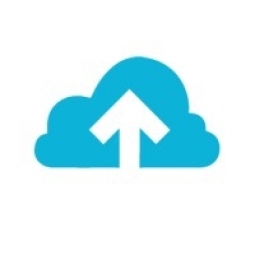Technology Category
- Functional Applications - Computerized Maintenance Management Systems (CMMS)
- Platform as a Service (PaaS) - Device Management Platforms
Applicable Industries
- Electronics
- Healthcare & Hospitals
Applicable Functions
- Maintenance
- Quality Assurance
Use Cases
- Asset Health Management (AHM)
- Asset Lifecycle Management
Services
- System Integration
- Training
About The Customer
The customer is a large academic medical center based in New York City, NY. It has over 100,000 medical assets across six inpatient facilities and 300 locations. The health system prides itself on its innovation, performance, growth, and service to the community. Its clinical engineering department is key to its success. The health system had also recently acquired a new hospital. The customer was in need of a new computerized maintenance management software (CMMS) that could meet the current and future needs of the health system, and also help clean up and standardize their legacy data.
The Challenge
A large academic medical center based in New York City, NY, with over 100,000 medical assets across six inpatient facilities and 300 locations, was facing challenges with its outdated computerized maintenance management software (CMMS). The health system's clinical engineering department, which is key to its success, realized that their CMMS needed to be replaced to meet the current and future needs of the health system. They wanted all their hospitals on the same CMMS, but understood that switching CMMS systems can be difficult and expensive. Moreover, they were aware that the data in their existing system was not as clean as they wanted it to be. The health system had also acquired a new hospital and wanted it on the same CMMS. The challenge was to choose the right CMMS, clean up their legacy data, and standardize the new hospital’s asset nomenclature to match the established standard.
The Solution
The health system enlisted the help of ISS Solutions Inc., a company owned by Geisinger health system that provides clinical equipment management services. ISS Solutions performed a market analysis of the top 5 CMMS products in the industry, compared the CMMS vendors and key features of their products, met with the vendors to verify the capabilities of their products, and provided the health system with a detailed report for them to use in their selection process. Based on ISS Solutions’ analysis, the clinical engineering department chose Nuvolo Connected Workplace for Healthcare as its next CMMS. ISS Solutions then worked with the client’s clinical engineering and IT teams to analyze and scrub over 100,000 records to remove duplicate manufacturers and models, standardize device types, and correct other anomalies. They also cleaned and standardized the new hospital’s asset nomenclature to match the established standard. Once all the data clean-up was completed, the health system was ready to migrate to Nuvolo.
Operational Impact

Case Study missing?
Start adding your own!
Register with your work email and create a new case study profile for your business.
Related Case Studies.

Case Study
Remote Temperature Monitoring of Perishable Goods Saves Money
RMONI was facing temperature monitoring challenges in a cold chain business. A cold chain must be established and maintained to ensure goods have been properly refrigerated during every step of the process, making temperature monitoring a critical business function. Manual registration practice can be very costly, labor intensive and prone to mistakes.

Case Study
Hospital Inventory Management
The hospital supply chain team is responsible for ensuring that the right medical supplies are readily available to clinicians when and where needed, and to do so in the most efficient manner possible. However, many of the systems and processes in use at the cancer center for supply chain management were not best suited to support these goals. Barcoding technology, a commonly used method for inventory management of medical supplies, is labor intensive, time consuming, does not provide real-time visibility into inventory levels and can be prone to error. Consequently, the lack of accurate and real-time visibility into inventory levels across multiple supply rooms in multiple hospital facilities creates additional inefficiency in the system causing over-ordering, hoarding, and wasted supplies. Other sources of waste and cost were also identified as candidates for improvement. Existing systems and processes did not provide adequate security for high-cost inventory within the hospital, which was another driver of cost. A lack of visibility into expiration dates for supplies resulted in supplies being wasted due to past expiry dates. Storage of supplies was also a key consideration given the location of the cancer center’s facilities in a dense urban setting, where space is always at a premium. In order to address the challenges outlined above, the hospital sought a solution that would provide real-time inventory information with high levels of accuracy, reduce the level of manual effort required and enable data driven decision making to ensure that the right supplies were readily available to clinicians in the right location at the right time.

Case Study
Gas Pipeline Monitoring System for Hospitals
This system integrator focuses on providing centralized gas pipeline monitoring systems for hospitals. The service they provide makes it possible for hospitals to reduce both maintenance and labor costs. Since hospitals may not have an existing network suitable for this type of system, GPRS communication provides an easy and ready-to-use solution for remote, distributed monitoring systems System Requirements - GPRS communication - Seamless connection with SCADA software - Simple, front-end control capability - Expandable I/O channels - Combine AI, DI, and DO channels

Case Study
Driving Digital Transformations for Vitro Diagnostic Medical Devices
Diagnostic devices play a vital role in helping to improve healthcare delivery. In fact, an estimated 60 percent of the world’s medical decisions are made with support from in vitrodiagnostics (IVD) solutions, such as those provided by Roche Diagnostics, an industry leader. As the demand for medical diagnostic services grows rapidly in hospitals and clinics across China, so does the market for IVD solutions. In addition, the typically high cost of these diagnostic devices means that comprehensive post-sales services are needed. Wanteed to improve three portions of thr IVD:1. Remotely monitor and manage IVD devices as fixed assets.2. Optimizing device availability with predictive maintenance.3. Recommending the best IVD solution for a customer’s needs.









